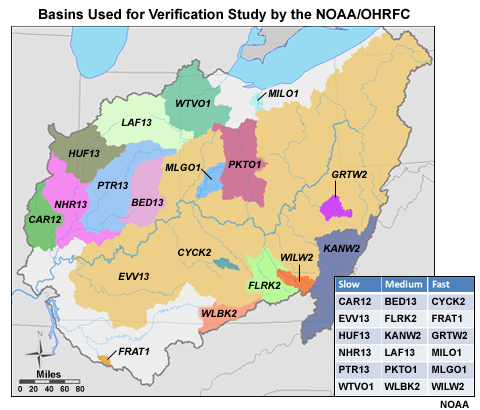Basins Studied
The OHRFC used 18 basins in its area to perform the QPF study. The basins were aggregated into three groups of six—slow, medium, and fast—based on hydrologic response time.

In the table on this figure, the right column shows the fast-response basins. These tend to be the basins with smaller areal coverage and/or steeper slopes. The middle column has the medium-response basins. In the left column are the slow-response basins, which tend to have relatively large areal coverage. Grouping basins together, called aggregation of basins, based on similar physical characteristics is a common practice. It helps to increase the sample size for a certain type of basin. Larger sample size leads to greater confidence in the computed verification scores.
- Aggregation: grouping basins based on similar characteristics
- Increases sample size
- More confidence in verification scores
There were roughly 700-750 forecast-observation pairs for each individual basin and for each lead time interval. Shown here are the sample sizes within the fast-response group. The numbers for the medium- and slow-response groups are similar. When aggregated together, the sample size for the whole fast-response group is about 4,400. The sample sizes for the medium- and slow-response groups are almost identical.
